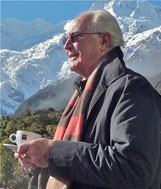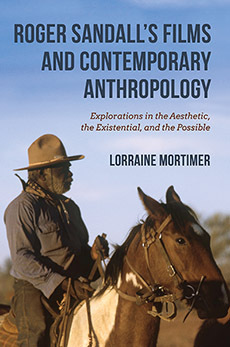(Encounter, July 1976)
Research institute or sacred site?
Bryan Wilson’s piece about secularisation (Encounter, October 1975) overlooks one of the more poignant features of the modern scene—the new role of anthropologists as custodians of primitive religion, and the conversion of ethnographic research institutes into bastions of religious faith.
I don’t mean to suggest that every bright-eyed PhD candidate in anthropology today sees himself in a priestly role, or feels inspired by a religious vocation. Most are as sceptical of sorcery as of perdition. But what George Feaver has called the New Tribalism is a proud creed, and its gods are jealous gods. Syncretised with the pride and jealousy of the Old Tribalism the result is a powerful endorsement of totem and taboo.
Of course it is still possible to be both an anthropologist and a sceptic. Nevertheless both individual scholars and entire research organisations are finding that the price of an accommodation with science has often to be paid on bended knees.
Take for example the Australian Institute of Aboriginal Studies. This was set up in the good old days when social scientists were less apologetic about their trade, and primitive religion was still something you studied rather than endorsed. A culture was dying, and the Institute was to record what still survived. It was in this spirit that a series of films were made showing Aboriginal secret ceremonies—films which it was hoped would provide an observational basis for future research and an educational resource for Aborigines and Whites alike.
Realism too realistic for its own good
But this was not to be. It seems realism can be too realistic for its own good. Like most modern documentaries the films stick close to actuality. Unlike most modern documentaries this very feature was a serious handicap. For surely, it was argued, if the original actuality were an awfully secret affair, shouldn’t the alarmingly realistic facsimile be secret too?
Such was the feeling of old tribesmen adhering to the Old Tribalism. In recent times such a view had scarcely affected the march of science in Sydney and in Melbourne; the physical universes of tribe and metropolis were distinct, and their respective ethical universes were too.
But now things have been changing. What if a secret ceremonial scenario were sent back from the film labs in Sydney and projected to the wrong people out in the bush? The ubiquitous projector made this possible. The thirst of Aboriginal communities for films of all and every kind made it probable. To forestall such an eventuality restrictions were put on the distribution of the films to ensure that they would never travel unchaperoned beyond the city limits.
Such restrictions satisfied the pride of the Old Tribalism—a pride of exclusiveness. But soon the New Tribesmen pointed out how unfair and wrong it was to allow white women and children and uninitiated men in Sydney and Melbourne to see the films while their black compatriots were forbidden. In contrast to that of the Old Tribalism the pride of the New Tribalism is egalitarian; and this emotion is much harder to satisfy. Those who most strongly feel it are apt to strike all-or-nothing attitudes: if all cannot share equally, then none shall share anything at all.
And so it was to be. Driven by the threats of the New Tribals and their white devotees, fearful of alienating the Old, the Institute proceeded to extend the parochial ethical scheme of Aboriginal society (with all its prohibitions and resolutely anti-feminine rules) to the Australian nation as a whole. Henceforth only mature males with impeccable bona fides would be allowed to see the films.
The Institute had been set up to “do science”, a secular activity. Yet in a curious way it has ended up “doing religion.” In its own eyes the Institute may have seen itself as a producer of scientific records; but in the eyes of Tribalism, both Old and New, its true role was that of a manufacturer of religious artifacts. And having become an archive of sacred objects it was hard to refuse doing priestly duty as the temple guardian as well. In this way a scientific body found itself gradually moving from the world of fact to the world of faith—and from the dull routines of research to the higher excitements of revivalism.
The perils of revivalism
Revivalism is a notoriously emotional business, and it was only to be expected that some of the more ardent spirits should have been carried away. Out in the bush, zealous young white converts to the New Tribalism took it upon themselves to spiritually fortify Aboriginals whose faith was on the wane. I remember one evening hearing an old Aboriginal stockman complain about the nuisance of local sorcery—he had been a victim of “bone-pointing” that very day. A young white enthusiast from the city gently corrected him.
It was patiently explained that whatever its discomfiting effects on individuals, bone-pointing played a vital cultural role in stiffening social discipline and ensuring community respect for traditional rules. The old man fell silent, put on his hat, and went silently off into the night.
But it was not in the bush, it was in the nation’s Academies, that logic was stoically pushed to an extreme. If films could be banned, then why not books as well? Didn’t they too contain illustrations of sacred didgeridoos and churingas? Couldn’t they also make public and known what must never be seen or shown? Pursuing this line of thought one scholar at the University of Sydney, reviewing a new book of ethno-archaeological research on “The Foragers of the Australian Desert”, drew the sado-masochistic conclusion that
“In fact I myself have no business looking at this book and will immediately consign it to the deepest box in the darkest available cupboard; I fear that not all other Europeans in the area who may have purchased it will do the same. . . .” Mankind, December 1971, p. 157.
The desire to appease
Such zest for intellectual self-immolation gave the Australian Institute of Aboriginal Studies pause, the more so since men and women of similar opinions loomed increasingly large among its younger membership. Now it has tried to come to terms with current events in a document which sets forth The Institute’s Philosophy and Function. And it is encouraging to see that its tone is not wholly apologetic. We are told that if the Institute is to continue to do scientific research rather than to become some kind of service agency for Aboriginal communities, or a super-secret repository of Holy Objects, then
for the time being it must be serviced and operated by people qualified to do so. Aboriginality per se is not a substitute for qualifications, training and experience in the techniques and processes of human biology, archaeology, archival work, bibliography and the like.
All of which is clear enough (despite the evasive definition of science as consisting of techniques and processes rather than an attitude toward truthful explanation which scientific methods embody and express). But will the Institute have the courage of its revivified secular convictions? Those whose ears are sensitive to religious overtones can only read what follows with misgiving.
The Committee believes that the Institute can assist greatly in providing Aborigines with a repository of knowledge which can assist in the confirmation of those aspects of Aboriginal life and culture that are central to the whole concept of Aboriginal identity.
It remains to be seen how anthropologists will succeed in combining the central western tradition of disinterested inquiry with the “confirmation” of Aboriginal life and culture—especially when the confirmation is of patently false beliefs about oneself and one’s community, and archaic patterns of the sacred and the profane.

 An Australian writer living in Sydney, Roger Sandall is the author of The Culture Cult (2001), a study of romantic primitivism and its effects. His work has appeared in a number of places including Commentary, The American Interest, Encounter, The New Criterion, The American, Sight and Sound, Quadrant, Art International, The New Lugano Review, The Salisbury Review, Merkur, Mankind, Visual Anthropology, and Social Science and Modern Society.
An Australian writer living in Sydney, Roger Sandall is the author of The Culture Cult (2001), a study of romantic primitivism and its effects. His work has appeared in a number of places including Commentary, The American Interest, Encounter, The New Criterion, The American, Sight and Sound, Quadrant, Art International, The New Lugano Review, The Salisbury Review, Merkur, Mankind, Visual Anthropology, and Social Science and Modern Society.